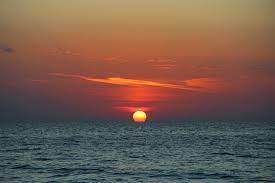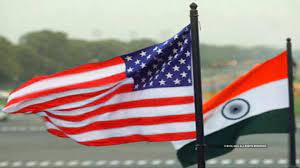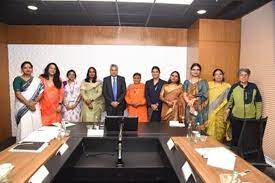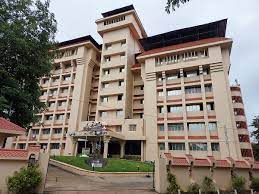Today’s Current Affairs: 21st Feb 2024 for UPSC IAS exams, State PSC exams, SSC CGL, State SSC, RRB, Railways, Banking Exam & IBPS, etc
Table of Contents
Mission Basundhara 4.0 : Assam

Assam Chief Minister announced the initiation of a survey of land within char (riverine) areas under Mission Basundhara 4.0, aimed at settling land in these regions.
- Mission Basundhara is a program in Assam, India that aims to make land revenue services more accessible to citizens.
- The program includes land-related services like:
- Land mutation
- Updating land records
- Delivery of services to people at their homes through online mode
- Mission Basundhara 1.0 was launched on October 2, 2021, and Mission Basundhara 2.0 was launched on November 14, 2022.
- Mission Basundhara 3.0 will aims to ease the process of buying and selling land and end conflicts between families arising out of land boundaries.
Paruveta Utsavam : Mock Hunting Festival

Efforts are underway to secure UNESCO recognition for the annual ‘Paruveta’ (mock hunting festival) held at the Sri Narasimha Swamy temple in Ahobilam as an ‘intangible cultural heritage’.
- Legend has it that Lord Vishnu, in his incarnation as Narasimha, married a tribal girl named Chenchulakshmi, and the festival commemorates this union.
- Participants observe ‘Narasimha Deeksha’ by wearing yellow robes and ‘Tulasi Mala’ and practicing celibacy.
- The festival highlights the absence of caste discrimination, with temple staff residing in tribal hamlets throughout the event.
- The ceremony involves tribals shooting arrows at the deity’s palanquin as a sign of reverence and protection.
- The Ahobila Mutt has historically promoted the festival to spread Srivaishnavism among tribal communities, further affirming the tribal link to Lord Vishnu.
Gupteshwar Forest : Biodiversity Heritage Site

Gupteswar Forest, adjacent to Gupteswar Shiva temple in Odisha’s Koraput district has been declared as the 4th Biodiversity Heritage Site (BHS) of the state.
- Gupteshwar Forest covers 350 hectares of demarcated area and holds immense cultural significance with its sacred groves, traditionally revered by the local community.
- It harbours a remarkable diversity of flora and fauna.
- The forest is home to at least 608 faunal species, including 28 species of mammals.
- Notable faunal species documented in the forest include the mugger crocodile, kanger valley rock gecko, sacred Grove Bush Frog, and various avifauna such as black baza, Jerdon’s baza, Malaber trogon, common hill myna, white-bellied woodpecker, and banded bay cuckoo.
- The limestone caves within the forest are home to eight species of bats, two of which are under the near-threatened category.
- The forest also boasts a rich floral diversity.
- It includes threatened medicinal plants like the Indian trumpet tree and Indian snakeroot.
- Biodiversity Heritage sites (BHS) are well-defined areas that are unique, ecologically fragile ecosystems with a high diversity of wild and domesticated species, the presence of rare and threatened species, and keystone species.
TN-SHORE Scheme: Tamil Nadu

The Tamil Nadu government has announced a new scheme called TN-SHORE, to revive the coastal resources and protect the endangered species in the 2024-2025 State Budget.
- TN-SHORE, aims to enhance coastal biodiversity, and coastal protection, improve livelihoods of coastal communities, and control pollution in coastal areas.
- The Tamil Nadu government also highlighted the Tamil Nadu Endangered Species Conservation Fund aimed at Endangered Species Conservation and the pursuit of Blue Flag certification for 8 beaches.
- TN-SHORE (Neithal Meetchi Iyakkam) is announced to restore coastal resources across 14 districts, spanning 1,076 km, at an estimated cost of Rs 1,675 crore.
- The scheme aims to enhance coastal biodiversity, and coastal protection, improve livelihoods of coastal communities, and control pollution in coastal areas.
- The Blue Economy refers to the sustainable use of ocean resources for economic growth, improved livelihoods, and jobs while preserving the health of the ocean ecosystem.
- The scheme will capitalise on the potential of the Blue Economy by focusing on the restoration of mangroves, coral reefs, and salt marshes, which are vital for the marine environment and the coastal economy.
- The scheme will also help in achieving the Sustainable Development Goals (SDGs), especially SDG 14 (Life Below Water).
Quasar : J0529-4351

An international team of astronomers said the recently discovered quasar named J0529-4351 was the brightest and fastest-growing quasar discovered so far and had a supermassive black hole about 17 billion times the mass of the Sun.
- Quasar is an extremely active and luminous type of active galactic nucleus (AGN).
- An AGN is nothing more than a supermassive black hole that is active and feeding at the centre of a galaxy.
- All quasars are AGNs, but not all AGNs are quasars.
- Quasars are thought to form in regions of the universe where the large-scale density of matter is much higher than average.
- They are among the most luminous, powerful, and vibrant objects known in the universe.
Anoxic Marine Basins:

According to scientists, anoxic marine basins may be among the most viable places to conduct large-scale carbon sequestration in the deep ocean.
- Anoxic Marine Basins is a body of water without oxygen.
- Permanent anoxic basins form when there is a strong layering of the water column created in a cup-like formation on the ocean floor.
- The layering is caused by density differences due to salt concentration or temperature.
- Once stratification occurs, circulation with the rest of the ocean is minimised, and microorganisms consume the oxygen in the water.
- In most anoxic basins, the water is extremely stagnant and can have mixing times of many thousand years.
- They range from a few hundred metres to several kilometres across and from 10 metres to 500 metres deeper than the surrounding seafloor.
- They can’t support animal life and are populated primarily by microbes and some very specialised fungi with different metabolisms than creatures in oxygen-rich environments.
- Some of them rely on molecules such as nitrate for respiration, and some get their carbon from gases like carbon dioxide (CO2) and methane (CH4) instead of eating other organisms or particles of organic matter.
- Many anoxic basins also contain toxic chemicals, which are produced by geothermal activity or by microbes living in the basins.
- Some also contain salt domes, big mounds of hardened salt.
- In some anoxic basins, methane and other gases collect in reservoirs beneath the seafloor.
- The gases can percolate upward, pushing up domes of sediment on the seafloor that are called mud volcanoes.
- The gases can burst through the soft sediments, creating “mini-eruptions” of wispy columns of sediment-filled water.
‘INDUS-X’ Summit:

The defence ministry said the ‘INDUS-X’ summit in Delhi marks a “significant milestone” in the collaborative efforts between the two countries.
- U.S.-India Defense Accelerator Ecosystem (INDUS-X) was launched in June 2023 during the state visit of the Prime Minister of India to the US.
- Objective is to expand strategic technology partnerships and defence industrial cooperation between governments, businesses, and academic institutions in India and the US.
- INDUS X will be a defence innovation bridge, which will inter-alia, include Joint Challenges, Joint Innovation Fund, Academia engagement, Industry-startup connect, investment by private entities in defence projects, mentoring by experts and niche technology projects etc.
- It will focus on advancing high-tech cooperation and fostering joint research, development, and production opportunities in the defence sector.
- The initiative aims to explore possibilities for co-producing jet engines, long-range artillery, and infantry vehicles.
- India’s Innovations for Defense Excellence (iDEX) and the Office of the Secretary of Defense (OSD), US, are leading INDUS-X activities.
- Innovations for Defense Excellence (iDEX) is the flagship scheme of the Ministry of Defence, Govt of India, launched in 2018.
- The objective of the scheme is to cultivate an innovation ecosystem in the Defence and Aerospace sector by collaborating with startups, innovators, MSMEs, incubators, and academia.
National Council For Transgender Persons : Meeting

The National Council for Transgender Persons (NCTP) convened its pivotal meeting under the Chairmanship of Secretary, Ministry of Social Justice and Empowerment.
- National Council for Transgender Persons is a statutory body constituted under the Transgender Persons (Protection of Rights) Act 2019 to safeguard the rights of transgender persons in India.
- It is responsible for monitoring and evaluating the implementation of the provisions of the Transgender Persons (Protection of Rights) Act, 2019 and making recommendations to the government on measures to promote and protect the rights of transgender persons.
- Aims to focus on livelihood issues as well as to raise awareness about the trans community for achieving the goal of social justice so that transpersons are accepted within families and in the larger society.
- Composition :
- The Union Minister of Social Justice & Empowerment is the Chairperson (ex-officio).
- The Union Minister of State for Social Justice & Empowerment is the Vice-Chairperson (ex-officio) of the council.
- The other members of the Council include representatives of various Ministries/Departments
- Five representatives of the transgender community.
- Representatives of the National Human Rights Commission (NHRC) and the National Commission for Women (NCW), representatives of State Governments and UTs, and experts representing NGOs.
Mission Aspides:

The European Union recently launched Mission Aspides to protect commercial vessels in the Red Sea from attacks by Iran-backed Houthi rebels.
- Mission Aspides is a European Union (EU) naval mission to protect cargo ships in the Red Sea from attacks from Yemen’s Houthi rebels.
- It will send European warships and airborne early warning systems to the Red Sea, Gulf of Aden and surrounding waters.
- So far, France, Germany, Italy and Belgium have said they plan to contribute ships.
- Aspides vessels, whose operational command centre will be in the Greek city of Larissa, will have orders to fire on the Houthis only if they attack first and will not be authorised to shoot pre-emptively.
- The mission is planned for one year but may be renewed.
- Red Sea is a semi-enclosed inlet(or extension) of the Indian Ocean between the continents of Africa and Asia.
- It is one of the world’s warmest seas.
- It is connected to the Arabian Sea and the Indian Ocean to the south through the Gulf of Adenand the narrow strait of Bab El-Mandeb.
- The northern portion of the Red Sea is bifurcated by the Sinai Peninsula into the Gulf of Aqaba and the Gulf of Suez, where it is connected to the Mediterranean Sea via the famous Suez Canal.
Rubber Board:

The government has increased the allocation for Sustainable and Inclusive Development of the Natural Rubber Sector by 23% to Rs 708.7 crore for the next two financial years and the scheme is run by the Rubber Board.
- Rubber Board is a statutory organisation constituted under the Rubber Act, 1947.
- It functions under the administrative control of the Ministry of Commerce and Industry.
- It is responsible for the development of the rubber industry in the country by assisting and encouraging research, development, extension and training activities related to rubber.
- It also maintains statistical data of rubber, takes steps to promote marketing of rubber and undertake labour welfare activities.
- A crucial function of the Rubber Board is issuing licences to rubber producers, manufacturers, and exporters/traders.
- This licence, known as the “Rubber Board licence/registration,” is mandatory for anyone involved in rubber manufacturing and export
- It is headed by a Chairman appointed by the Central Government.
- It has 28 members representing various interests of the natural rubber industry.
ASEAN-India Trade In Goods Agreement:

The 3rd meeting of AITIGA Joint Committee for undertaking the review of ASEAN-India Trade in Goods Agreement (AITIGA) was hosted by India in Vanijya Bhawan, New Delhi from 16-19 February 2024.
- ASEAN-India Trade in Goods Agreement is a trade deal between the ten member states of ASEAN and India.
- This agreement was signed at the 7th ASEAN Economic Ministers-India Consultations in Bangkok, Thailand in 2009.
- The agreement, which came into effect in 2010, is sometimes referred to as the ASEAN-India Free Trade Agreement.
- The Agreement covers trade in physical goods and products; it does not apply to trade in services.
- ASEAN and India signed a separate ASEAN-India Trade in Services Agreement in 2014.
ASEAN:
- It is a group of the Association of Southeast Asian Nations, which was established in 1967 with the signing of the Bangkok declaration.
- Founding members: Indonesia, Malaysia, Philippines, Singapore and Thailand.
- Presently ASEAN comprises 10 member states namely Indonesia, Malaysia, Philippines, Singapore, Thailand, Brunei, Laos, Myanmar, Cambodia and Vietnam.




